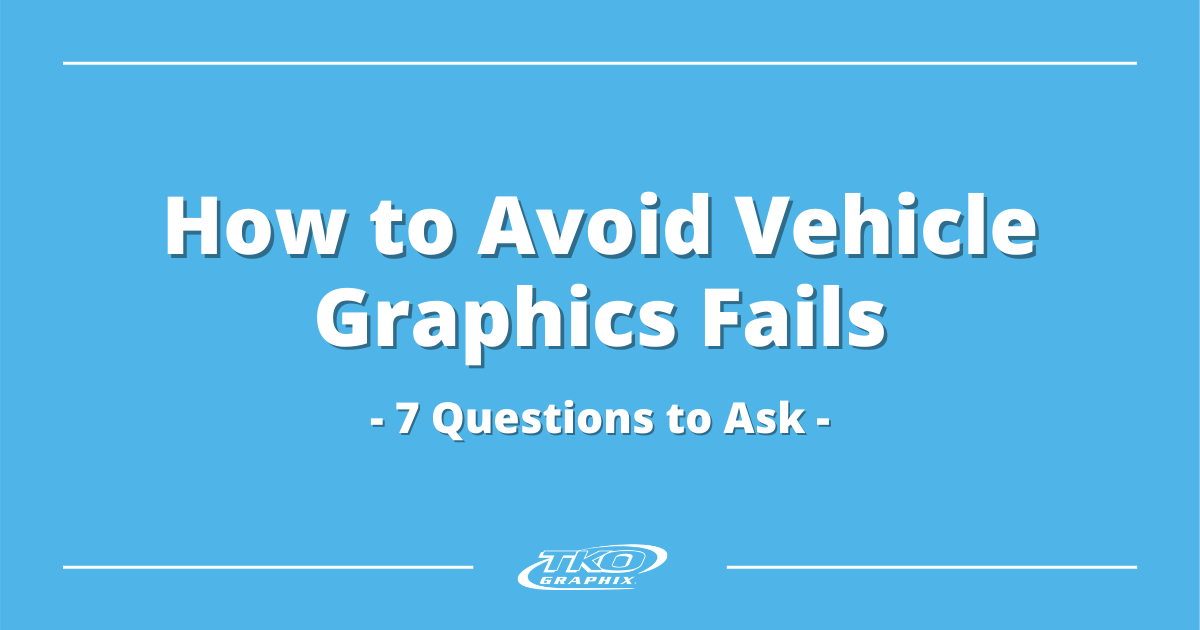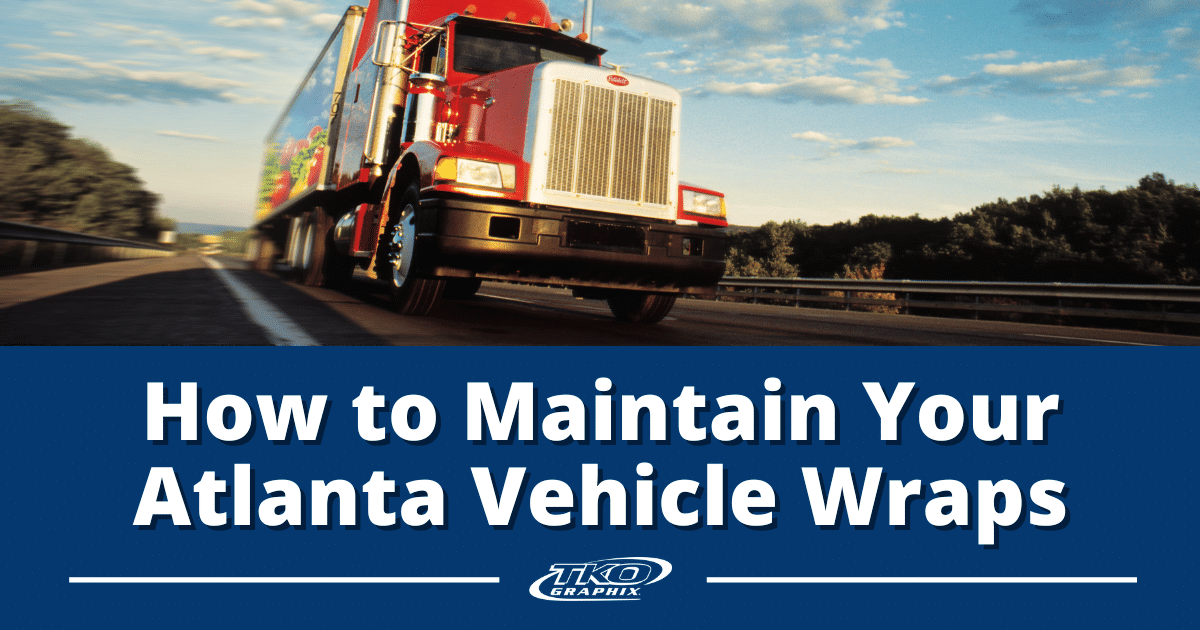How to Avoid Vehicle Graphics Fails
You can easily avoid vehicle graphics fails by hiring certified professionals to manufacture and install your vehicle graphics. There’s nothing worse than hiring a provider to design, fabricate, and install vehicle graphics only to have the work fall apart before its time.
Fleet and vehicle graphics not only identify and advertise an organization — they represent them. Graphics that fail, fade, rip, and shrink – send a message about the company they represent, and it’s not good. By following a few guidelines, your business can avoid most of the reasons for graphic fails.
Before finalizing any contract with a vehicle graphic manufacturer, be sure to answer these questions.
1. Are the Vehicle Graphics Installers Certified?
So, how do you find the best vehicle graphics installers? First, check for installer certification. Global powerhouse 3M™ offers vehicle graphic installation certification. However, you need to be aware that there are levels of certification. For example, an installer with a lower level certification may not be qualified to wrap complex curves, which is a significant part of a full vehicle wrap.
You should also ask if the installation team has been trained on the specifics of your vehicles, such as covering rivets on trailers, working around add on equipment, and wrapping various surfaces, such as plastic, glass, or corrugated trailer bodies.
Hiring qualified applicators is a major step in how to avoid vehicle graphics fails.
2. How Will the Vehicle be Prepped Prior to Installation?
Vehicle graphics surface preparation begins with a complete cleaning using a citrus based solvent or another non-invasive cleaner. Surfaces must be clean and dry. Organics, such as animal and insect remains, food particles, and plant material, in most cases, may be dislodged with mild soap and water. Petrochemicals, such as wax, oil, gasoline, or diesel, need to be removed entirely otherwise, the adhesive may fail.
3. Is the Best Material for the Job Being Used?
There are different adhesive vinyl materials for different application surfaces. Some are recommended for flat surfaces only, while others may be heated and stretched to conform to complex curves. Using the wrong material can lead to disaster. For example, attempting to complete a full wrap using an adhesive vinyl designated for flat surfaces will not work. The material will stretch, the design will be malformed, and the adhesive will be compromised. The two primary processes used to create adhesive vinyl for vehicle graphics are cast and calendered.
The online magazine SignIndustry.com shares how the two different materials are used in this article, Cast vs. Calendered Vinyl, “Cast films have generally been considered the industry’s premium or long-term films while calendered films have been associated with intermediate or short-term uses.”
4. How Will the Material be Heated?
Only experienced, qualified installers should attempt post-heating of the material. Heating the material beyond manufacturer limitations will cause bubbling and more.
Molly Waters, Sr. Regional Technical Specialist, Avery Dennison Graphics Solutions, shared her knowledge in her blog post, How to Post Heat for an Even Vehicle Wrap, “The simple step of post heating will prevent the film from lifting up and failing after installation. It also serves as an opportunity for a close up quality check of your wrap. As you go over areas that require the post heat you can look for areas that may have been missed or areas where air is accumulating to form bubbles.”
5. What’s the Condition of the Substrate?
Vinyl won’t adhere to peeling paint or corrosion. It’s essential to repair these problems before applying adhesive vinyl graphics. One of the keys to avoid vehicle graphics fails is not to create problems by attempting to wrap an unsuitable surface.
As detailed in 3M’s FAQ 1080 Wrap Shops bulletin, “3M’s warranty only applies to vehicles that have an excellent bond of the paint and its finish to the vehicle substrate. Any rust, bubbling, scratches, dents or other damage will be visible through the film, and such surface imperfections may damage the film or cause the film to fail prematurely. Areas repaired with body filler must be sanded, epoxy primed and for best results, finished with OEM (Original Equipment Manufacturer) paint or clear coat. Any recently applied finish must be cured for the full amount of time recommended by the paint manufacturer before applying film.
6. Does Your Graphic Need to be Cured?
7. Will the Graphics be Protected with Overlaminate?
Ultraviolet rays cause paint and vinyl graphics to fade. Coating the vinyl surface with overlaminate protects the design from harmful rays, acidic moisture in the air, and some road debris. Laminating the material is recommended by adhesive vinyl manufacturers, such as 3M, who added, “It also provides excellent gloss and clarity of reflection, giving a “wet paint” look.”
How to Avoid Vehicle Graphics Fails
It’s so much easier to ask before the installation begins. We’ve been asked to “fix” vehicle graphic problems when unqualified, uneducated, or unscrupulous providers have failed to properly design, manufacturer, or apply vehicle graphics. It would have been simpler for the customer to ask the provider these seven questions before entering into an agreement. If you’re considering fleet and vehicle graphics take a little time and vet your provider. It could save a lot of worry and regret.
TKO Graphix is a Certified 3M™ MCS™ Warranty graphics manufacturer. Our installation crews are 3M Certified and are employees of TKO Graphix, not sub-contractors. If you’d like to learn more and get a free quote, contact us today.








Leave A Comment